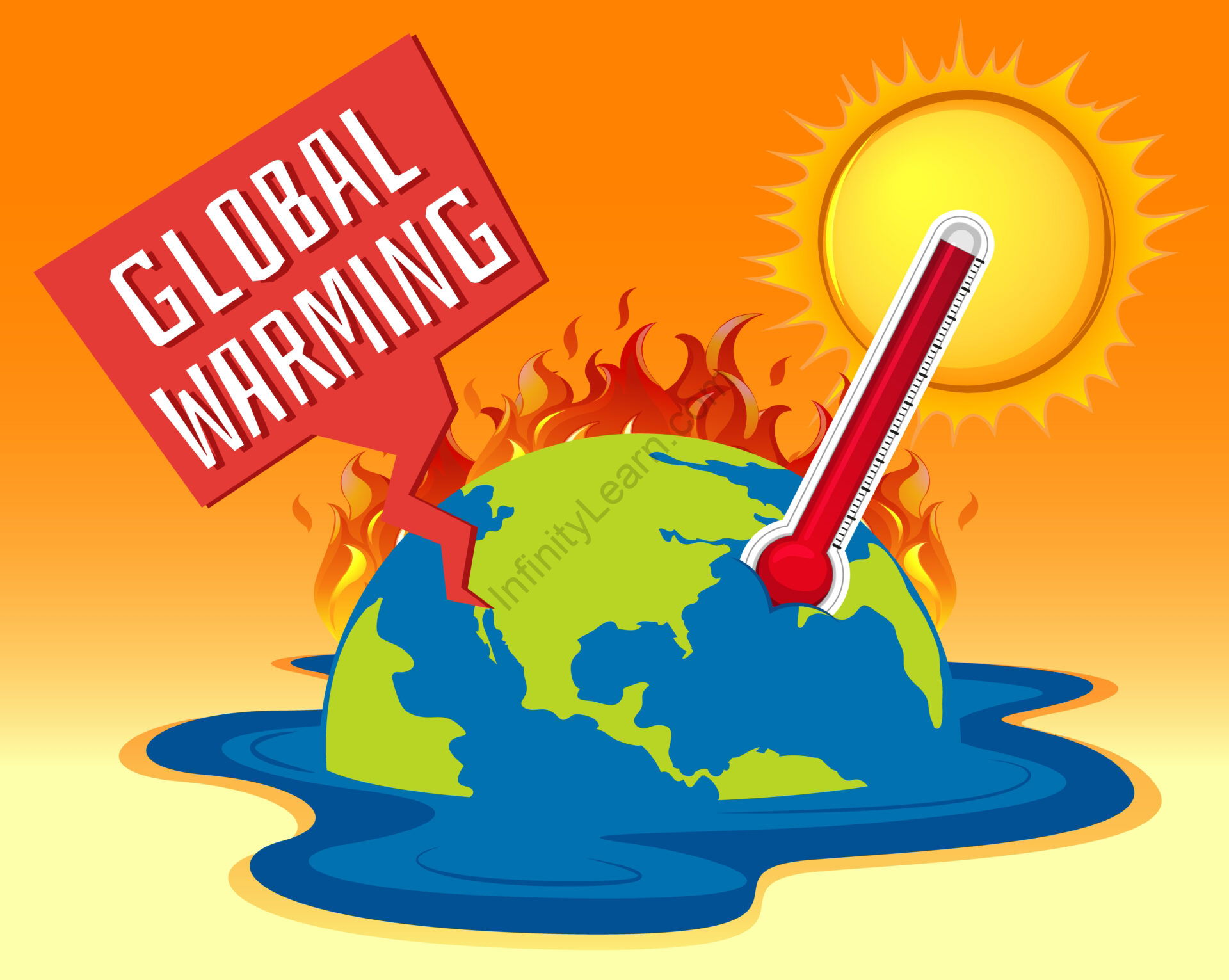Global Warming and Its Impacts

Global warming, a phenomenon characterized by the increase in Earth's average surface temperature, is primarily driven by human activities, notably the burning of fossil fuels, deforestation, and industrial processes. These activities increase concentrations of greenhouse gases (GH Gs) such as carbon dioxide (CO₂), methane (CH₄), and nitrous oxide (N₂O) in the atmosphere, which trap heat and lead to a gradual warming of the planet. The effects of global warming are far-reaching and multifaceted, impacting natural systems, human health, and the global economy.Causes of Global Warming
Burning of Fossil Fuels: The combustion of coal, oil, and natural gas for energy and transportation is the largest source of greenhouse gas emissions. Power plants, vehicles, and industrial facilities release substantial amounts of CO₂ and other pollutants.Deforestation: Forests act as carbon sinks, absorbing CO₂ from the atmosphere. When trees are cut down for timber or to clear land for agriculture, the stored carbon is released, and the land’s capacity to absorb CO₂ is diminished.Industrial Processes: Cement production, chemical manufacturing, and other industrial activities contribute to the release of GHGs. Additionally, certain industrial processes produce fluorinated gases, which are potent greenhouse gases.
Agriculture: Livestock farming produces methane through enteric fermentation, while rice paddies emit both methane and nitrous oxide. The use of synthetic fertilizers also contributes to N₂O emissions.
Impacts of Global Warming
Rising Sea Levels: As global temperatures rise, polar ice caps and glaciers melt, contributing to an increase in sea levels. This threatens coastal communities with flooding, erosion, and saltwater intrusion into freshwater supplies. Low-lying island nations and coastal cities are particularly vulnerable.
Extreme Weather Events: The frequency and intensity of extreme weather events, such as hurricanes, heatwaves, droughts, and heavy rainfall, have increased. These events can cause significant damage to infrastructure, disrupt food and water supplies, and lead to loss of life.
Ecosystem Disruption: Many plant and animal species are struggling to adapt to rapidly changing temperatures and shifting habitats. Coral reefs, for example, are experiencing widespread bleaching due to warmer ocean temperatures, which threatens marine biodiversity.Agricultural Impact: Changes in temperature and precipitation patterns affect crop yields and the viability of farming in certain regions. Some areas may become too hot or too dry for traditional agriculture, leading to food insecurity and economic loss for farmers.Health Risks: Global
Economic Consequences: The economic impacts of global warming are profound, affecting sectors such as agriculture, forestry, fisheries, and tourism. Damage from extreme weather events can strain public finances and insurance systems, while the costs of adapting infrastructure to withstand new climate realities are substantial.
Mitigation and Adaptation Addressing global warming requires a combination of mitigation strategies to reduce GHG emissions and adaptation measures to manage the impacts. Key strategies include:Transition to Renewable Energy: Shifting from fossil fuels to renewable energy sources such as wind, solar, and hydroelectric power can significantly reduce GHG emissions. Investment in energy efficiency and smart grid technologies also plays a crucial role.
Reforestation and Conservation: Protecting existing forests and restoring degraded lands can enhance carbon sequestration. Sustainable land management practices are essential to maintain the health of terrestrial ecosystems.Sustainable Agriculture: Adopting practices that reduce methane and nitrous oxide emissions, such as precision farming, crop rotation, and the use of organic fertilizers, can mitigate the agricultural sector’s impact.
Carbon Pricing: Implementing carbon pricing mechanisms, such as carbon taxes or cap-and-trade systems, can create economic incentives for businesses and individuals to reduce their carbon footprint.Climate-Resilient Infrastructure: Building and retrofitting infrastructure to withstand the impacts of climate change, including sea-level rise and extreme weather, is critical for adaptation. This includes improved water management systems, resilient building designs, and protective coastal barriers.

International Cooperation: Global warming is a global challenge that requires international collaboration. Agreements such as the Paris Agreement aim to unite countries in the effort to limit global temperature rise and enhance adaptive capacities.ConclusionGlobal warming represents one of the most pressing challenges of our time, with wide-ranging implications for the planet's ecosystems, human societies, and economies. Combating this issue requires a concerted effort to reduce greenhouse gas emissions and implement strategies to adapt to the changing climate. Through international cooperation, technological innovation, and sustainable practices, it is possible to mitigate the impacts of global warming and build a resilient future.

Nice